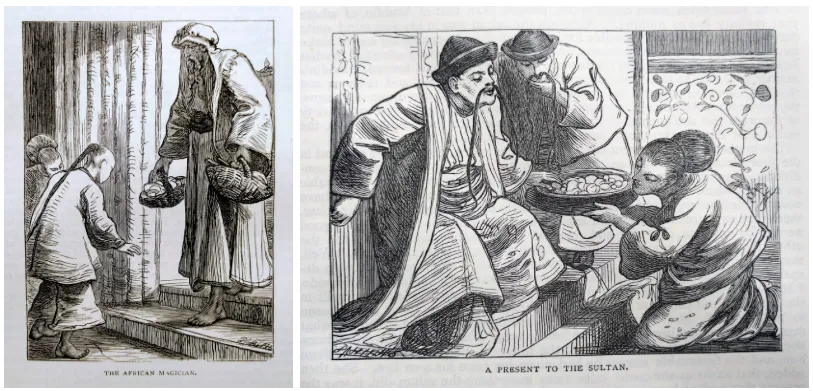There once lived a poor tailor, who had a son called Aladdin, a careless, idle boy who would do nothing but play all day long in the streets with little idle boys like himself…
He knew that the poor tailor's son could only have accomplished this by means of the lamp, and travelled night and day till he reached the capital of China, bent on Aladdin's ruin…
Aladdin went to the dead magician, took the lamp out of his vest, and bade the genie carry the palace and all in it back to China…
While the famous tale of Aladdin features a very stereotypically Arabic setting, its history and origins are anything but. This is a tale from the One Thousand and One Nights that was not part of the original 14th century Arabic manuscript or stories, but rather added by a Frenchman, Antoine Galland, when he published the first translation of the incomplete Arabic original in the early 1700s.
Still, just as with Scheherazade's tales that twist and turn with each new revelation, we have also learned that Galland did not create the tale of Aladdin out of thin air. He procured it from Antun Yusuf Hanna Diyab, a Syrian Maronite who shared with Galland more than a dozen tales to be added to the later volumes of One Thousand and One Nights.
Diyab was born in Aleppo, Ottoman Syria, around 1688. He was barely mentioned in Galland's diary, but when Diyab's autobiography was discovered in the 1990s, it revealed much about his life and the true story behind Aladdin. In 1709, when Galland's publisher started inserting more stories into his manuscript to meet public demand, Galland felt compelled to find tales of his own to fill out further volumes. During his search, he ended up at his colleague Paul Lucas's apartment, where he met Diyab who had been playing companion and interpreter for Lucas at the time.
The various impressions of Aladdin’s tale.
It is hard to parse how much of the tale of Aladdin came from Diyab versus Galland, but we do know that Diyab set the story in faraway China, most likely as a way to give it an exotic locale. We assume this since nothing else has changed to imply any Chinese culture (example the leader is a sultan rather than an emperor). Due to this Far East connection and the Orientalist exotification happening in the later Victorian era, subsequent portrayals and illustrations of Aladdin would play up the Chinese aspect, showing Aladdin with a stereotypically Manchurian hairstyle.
According to Diyab's autobiography, Galland was afraid that Diyab would gain a position at the Royal Library that he desired for himself and Galland conspired to send Diyab back to Aleppo. After his return to Aleppo in 1710, Diyab became a successful cloth merchant with the help of his brother, got married, had children and eventually had one of the largest houses in the community.
It is also through his autobiography that some have wondered if Aladdin was actually based on the young Diyab, who outlines his rough upbringing and describes Versailles in a very similar manner as the lavish palace in the Aladdin story.
It's refreshing and hopeful to consider that, instead of the original mythos of Aladdin being written by a Frenchman based on French fairy tales and fascination with a stereotypically exotic Middle East, it is actually based on the life of a Middle Eastern man who merged his Arab storytelling traditions with his youthful life and observations of 18th century France.
For anyone wanting to rediscover the tale of Aladdin, there is a lovely new rendition of the story by a French Syrian writer, Yasmine Seale, titled Aladdin: A New Translation. Enjoy discovering a story you thought you knew well.
Special Contributor:
Ahmad Dialdin, a Saudi Editor and senior feature writer, who writes about art and culture. He also works at the Ministry of Culture.











